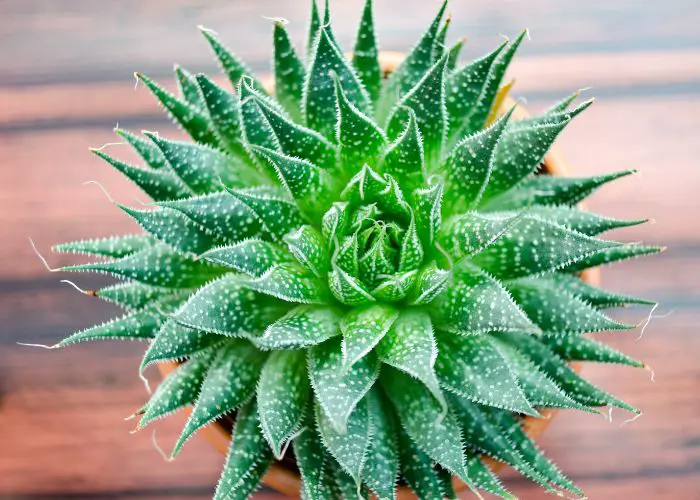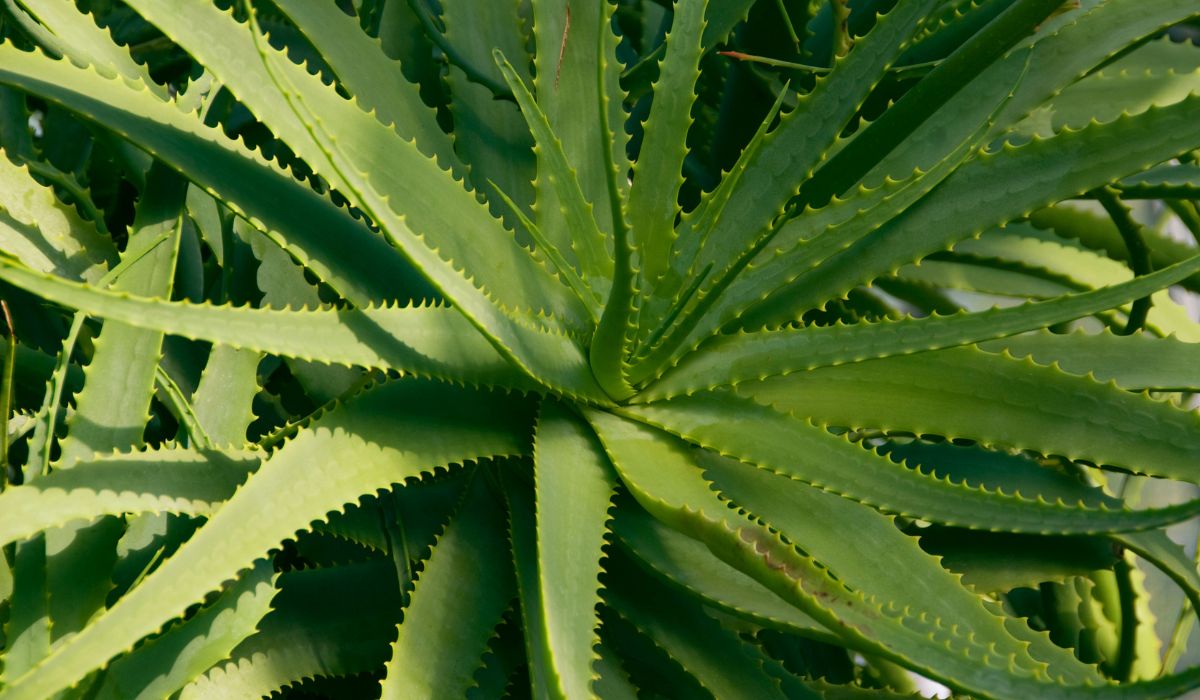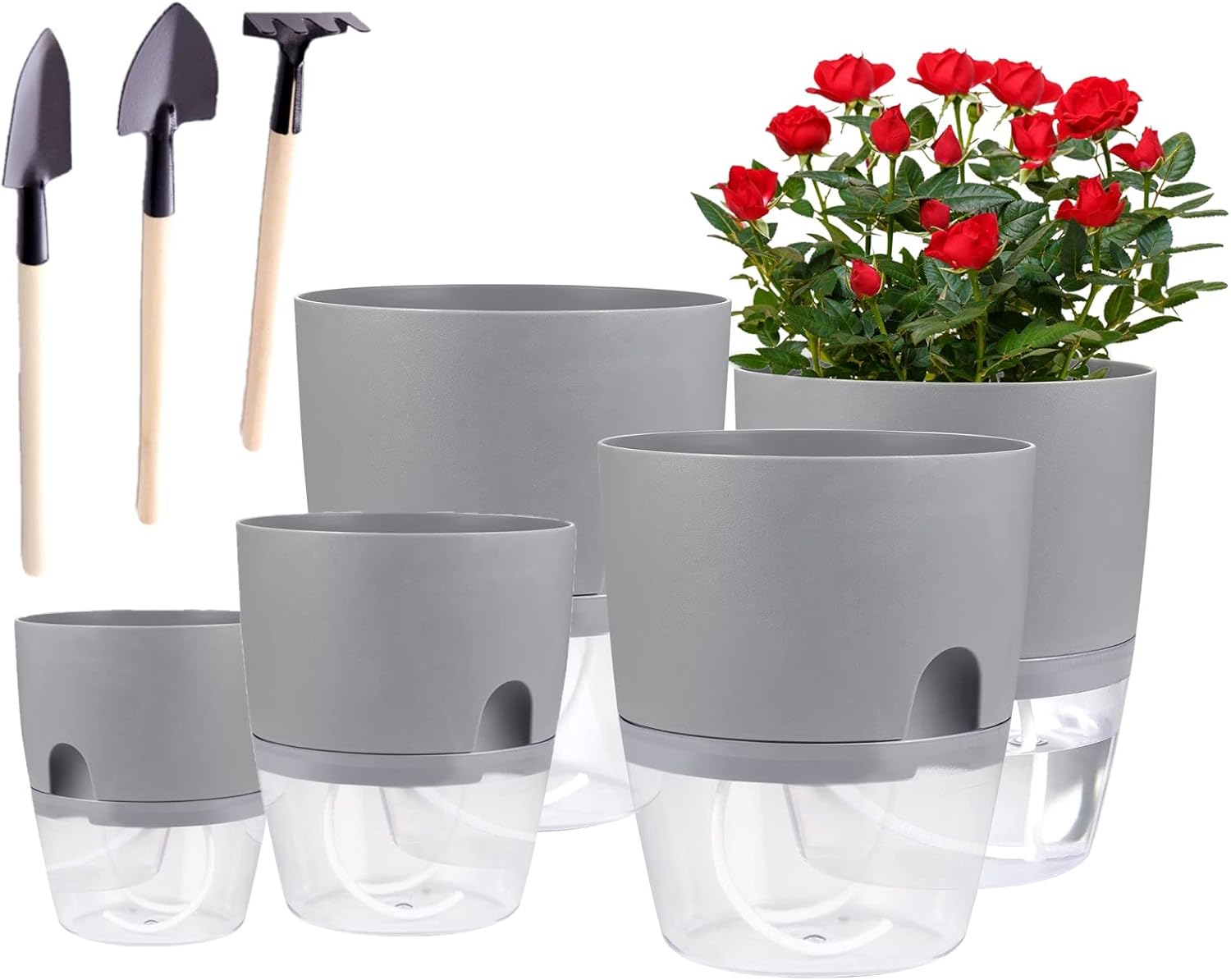Last Updated on January 20, 2023 by Urska
Female Aloe Vera? Biologically, aloes are protandrous – this means that when the male parts (stamens) of the flower are producing pollen, the female parts (stigma) are not receptive. This also means that there is no “male” or “female” aloe. There appears to be some sort of internet meme that has evolved around this whole story, and I think we first need to dissect this, and then move from there.
How Do Aloes Get Pollinated?
Aloes produce flowers. These flowers have stamens that produce pollen and a stigma that receives pollen. The pollen germinates on the stigma and will then fertilize the flower. The plants produce pollen before the stigma is ready to receive pollen – this means that the flowers cannot self-pollinate.
They require some sort of creature to move the pollen from one flower to another. A lot of aloes are pollinated by birds. There are occasional times when bees can assist in this, depending on the aloe species.
But from what we have described here, it is clear that all aloes have flowers that are for a certain time producing male pollen, and then for a certain time are receptive to pollen – ie female. So this means you cannot have a “male” or “female” aloe plant.
Is There a Male And a Female Aloe Vera Plant?
From what I can tell, the answer to this is a clear NO. However, people sometimes use funny terms to describe aspects of a plant that are not biologically true. Hence it seems that some people on the internet refer to a female plant as being a plant that produces a lot of young aloe shoots/offsets that grow into more aloe plants and a male is a plant that just grows and does not produce new shoots. If this is the case, it may just be two different aloe species being mistaken for Aloe vera. Not all aloes can reproduce by shoots and cuttings.
How Can I Tell If My Aloe Plant is Female?
Your Aloe vera plant is both male and female! That answers that question. It is not female.
Aloe vera produces pollen and the process by which it produces this pollen is somewhat messy from a biological perspective. But it is pollen! So the flowers are both male and female. Here is an old, but quite interesting article about Aloe vera pollen.
Read more about Overgrown Aloe Vera Plant
How Do I Identify an Aloe Vera Plant?
I have tried my hand at identifying certain types of Aloe over the years. Aloes such as Aloe ferox are quite easy! There are several different cultivars of Aloe vera, and there are also a lot of other species of Aloe that look pretty similar to Aloe vera. Other succulents can look surprisingly similar to aloes, such as the Haworthia spp. depicted below.
My general advice with aloe is to buy one that comes from a reputable nursery run by a succulent expert – succulent experts tend to be quite intense people and know their succulent plants. If you take an aloe to a herbarium, there will often be a botanist there who can key the aloe out and identify it.

What Is The Difference Between Aloe and Aloe Vera?
Aloe is a plant genus while Aloe vera is a species of an Aloe plant. If we look at genus and species you can think of it a bit like a family. So your family surname would be your genus, and then your own name is your species. Each family member is unique, but all are related by surname.
Benefits Of The Female Aloe Vera Plant
There are many benefits of aloe vera plants. Some of the benefits include:
- It’s a natural healing plant
- The gel in the leaves is a great home remedy for burns, cuts, and abrasions
- These plants bring beauty to the home and office
- Aloe vera contains vitamin C and minerals that can help relieve headaches, insomnia, stress, and depression
- Aloe vera relieves inflammation, prevents itching, and assists in healing sores and treating certain fungal infections
- It also helps the immune system’s functions
- Studies have shown Aloe vera assists in cleaning stale air in houses and buildings.
- Aloe vera has anti-cancer properties. It also contains carcinogens, so it is a double-edged sword.
- Aloe vera contains powerful antioxidants that are beneficial to our diets.
- It is used in many traditional remedies to help reduce fever
- Aloe vera prevents acne when the gel is applied to the skin
- It can prevent and treat dermatitis
This plant has a long history of use in the pharmaceutical industry and has been found to have anti-inflammatory properties. Some scientists believe that Aloe vera may even slow the aging process.
Final Words On Female Aloe Vera Plant!
Well, now we have cleared that one up! Aloe vera, as with all aloes, does not have male or female plants. Some Aloes produce more offset shoots from their Rhizomes, and some people errantly call these female plants. These are just growth forms of the aloe. In some cases, it appears from what I can see that people are calling two species of aloe the “male” and the “female” which is also completely wrong.
FAQ
How can you tell a male aloe vera plant from a female aloe vera plant?
Aloe vera plants are both male and female. There are no "male" and "female" plants.
How often do aloe plants produce pups?
This will depend on the cultivar, growth conditions and water availability. Aloe vera can get really out of hand under optimal conditions, crowding their pots out in a year or so, necessitating constant repotting. If your growth conditions are sub optimal this can take longer.
Can you grow aloe vera from a cutting?
Yes. The easiest way to grow Aloe vera is by dividing clumps of aloes and removing a "pup" or offset shoot from the main rhizome.
Does aloe vera reproduce by leaves?
I have seen people grow aloes from leaf cuttings - this requires a bit of skill and some hormones. My advice is always to take the simplest path to the best outcome - growing aloes from leaf cutting is difficult - growing aloes by removing pups/offsets and repotting them is easy. Choose this option.
Read more about Does Aloe Vera Smell Bad?
Branko is the world‘s most enthusiastic gardener! He is always on the hunt for the perfect flower, bush or tree to add to his ever–growing garden. He is known for his love of all things green, and his passion for nurturing the plants he grows is unmatched. He loves to get his hands dirty and can often be found humbly tending to his garden at all hours of the day. Branko is the go–to guy when it comes to gardening advice – he is always happy to share his knowledge and wisdom with anyone who will listen. He also loves to play pranks on unsuspecting visitors, so beware if you enter his garden!


